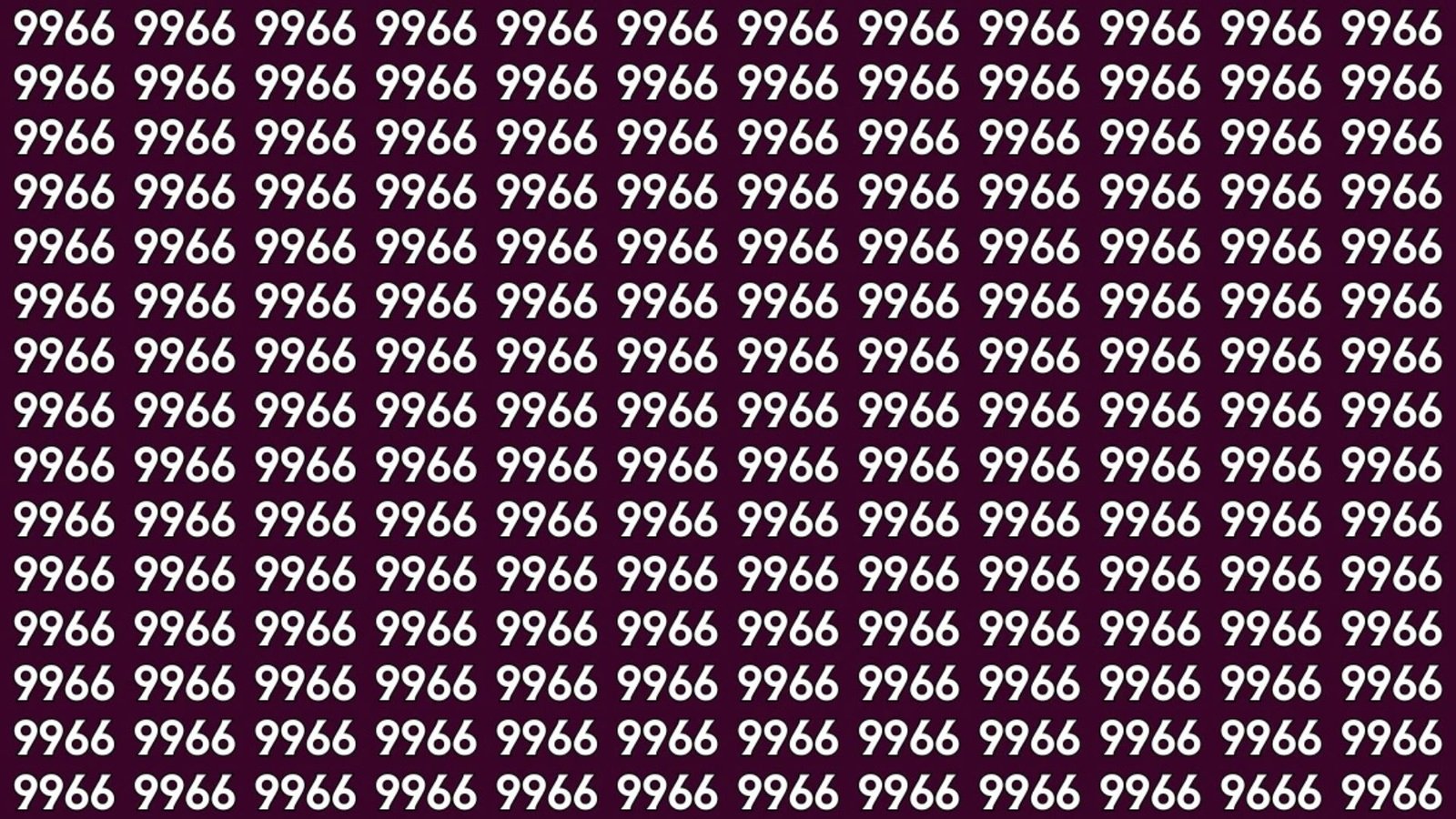Optical Illusion Challenge: Spot The Number 9666 Among 9966 Within 5 Seconds
It’s time for a new optical illusion challenge! This one is a little bit different than what we usually share, but it’s just as fun. Even though some people may be better at it than others, it’s still a game everyone can play. All you need is a keen eye and some patience.
It’s easy to look at something and not see what’s right in front of you. In fact, sometimes it’s the things that are right in front of us that are the hardest to spot. That’s why this challenge is so much fun. You have to be able to spot the number 9666 among a sea of 9966.
Did you find the number 9666?
If you did, congratulations! That was a tough one. If you didn’t, no worries. This was a tricky challenge, but we have another one for you. See if you can find the number 7 in this sea of 3s!
How did you do?
Most people can find the sneaky number in just a few seconds. If you’re struggling to find it, don’t worry—just keep looking! If you’ve been searching for a while and still can’t find it, don’t worry, we’ll help you out.
What makes optical illusions so tricky?
Optical illusions are images that trick our brains into seeing things that may not be real, so it’s no wonder they’re so tricky! By playing with colors, light, patterns, and more, optical illusions can be a fun way to challenge your mind and see how your brain works. But be warned, some of these puzzles are so wild, you may just find yourself asking, “What’s going on here?!”
So, if you’re ready to put your mind to the test and see if you can spot the sneaky number among the 9s, take a look at the image below.
What’s the science behind optical illusions?
The science behind optical illusions is all about how our brains process images. It’s a little more complicated than simply seeing is believing.
When we look at a picture, the light from the image goes into our eyes and hits the retina at the back of the eye. This is where the image is processed, and then it’s sent to the brain for further processing.
The brain will then interpret what we’re seeing, but it doesn’t always interpret it correctly. This can be due to a number of factors, such as how the image is formed or how the brain processes it.
Optical illusions can occur because of the way our eyes and brains process images. When we look at an optical illusion, our brains may see one thing, but our eyes may see something else. This can create a conflict in the brain, which can result in an optical illusion.
In this case, the brain may see the number 9966, but the eyes may see the number 9666. This can create a conflict, and the brain may interpret the image in a different way.
What are some examples of optical illusions in everyday life?
Optical illusions are everywhere you look, even if you don’t realize it! Magicians and artists use illusions to trick the eye and make things appear differently than they really are. You see optical illusions in everyday life, too. For example, when you see a cloud that looks like a dog or a face in the moon, your eyes are playing tricks on you. That’s because the brain is trying to make sense of what you see.
What are some other examples of optical illusions?
There are many different types of optical illusions, but they all have one thing in common: They trick the brain into seeing something that isn’t really there. Some of the most famous examples of optical illusions include the Necker cube, which is an ambiguous line drawing that can be interpreted in two different ways, and the Kanizsa triangle, which is a two-dimensional figure that gives the impression of a three-dimensional object.
Another famous optical illusion is the “impossible object,” which is a drawing that appears to be three-dimensional, but is actually not physically possible. One example of an impossible object is the Penrose triangle, which is an optical illusion that depicts a three-dimensional triangle that is physically impossible to construct.
How can I learn more about optical illusions?
If you want to learn more about optical illusions, you can find a wealth of information on the internet. A good place to start is the website for the American Academy of Ophthalmology. The site offers an overview of optical illusions, including how they work and what causes them.
You can also find a lot of great information about optical illusions on YouTube. There are many videos that explain how optical illusions work and show you how to create your own. You can also find videos that feature some of the best optical illusions of all time.
Finally, if you’re interested in learning more about the science behind optical illusions, you can find a lot of great books on the topic. Some of the best books on optical illusions are written by neuroscientists, who can offer a fascinating look at the way our brains process visual information.
Conclusion
We would like to know how you performed. Were you able to identify the hidden number? Please share your thoughts in the comments section!











